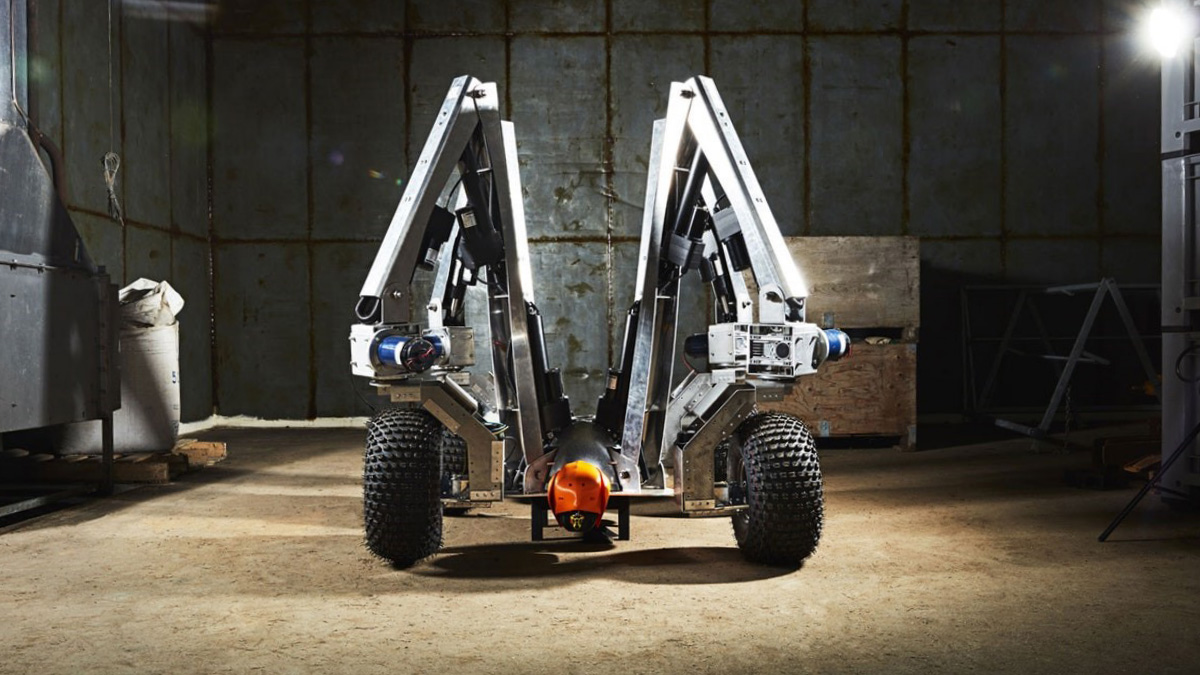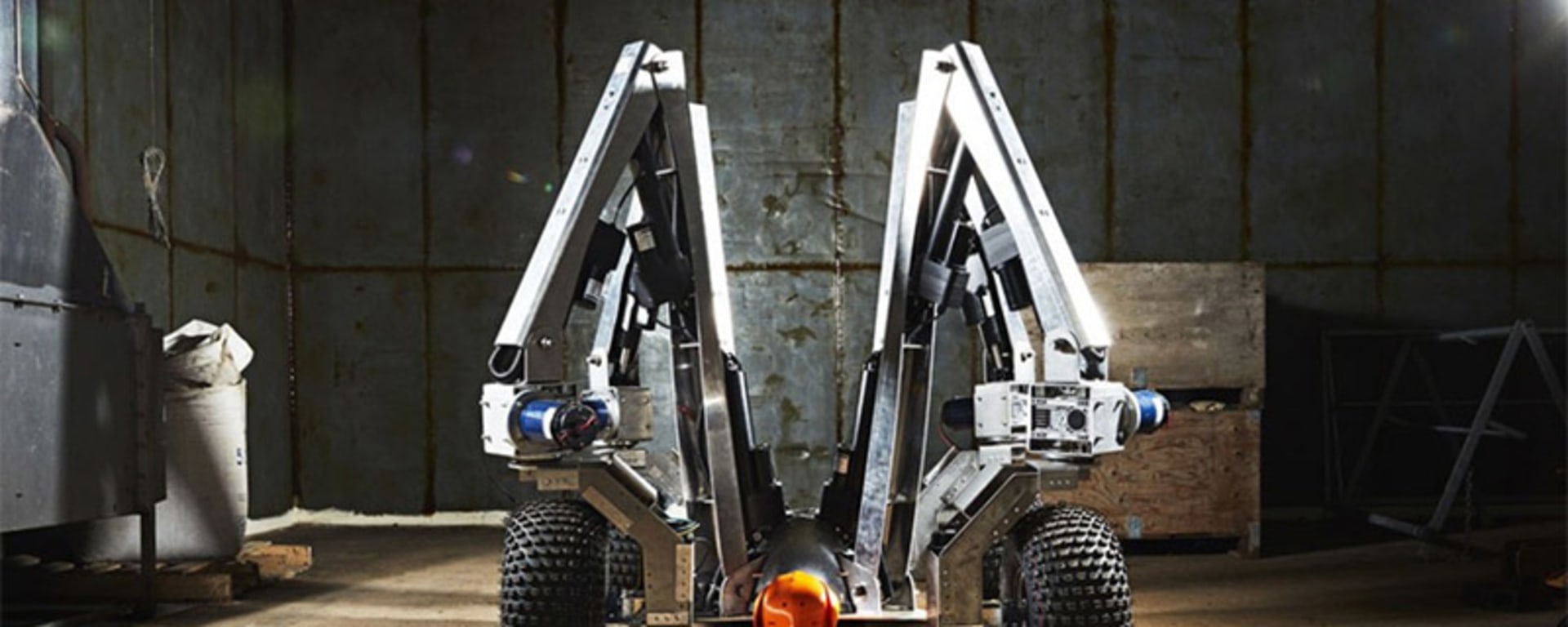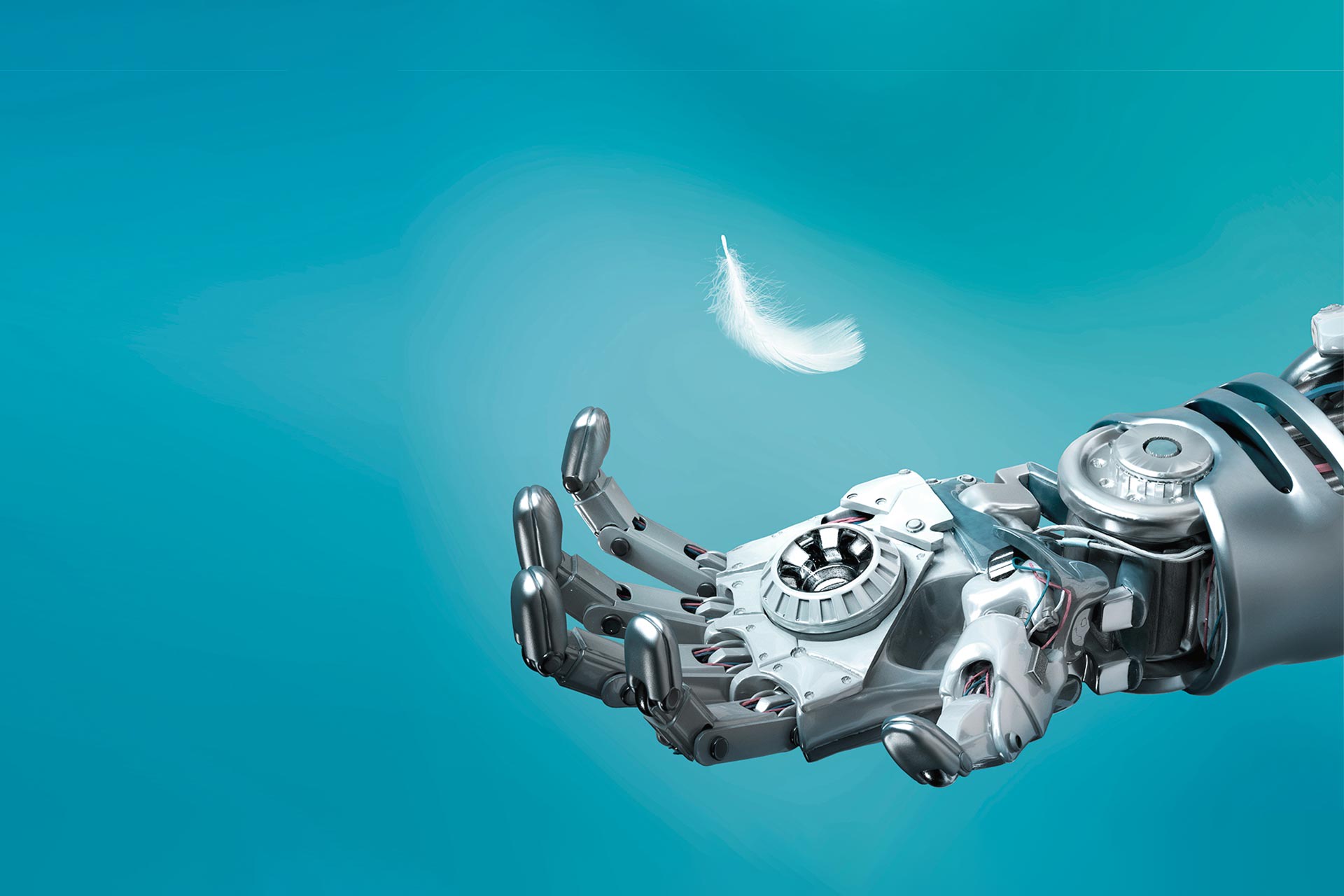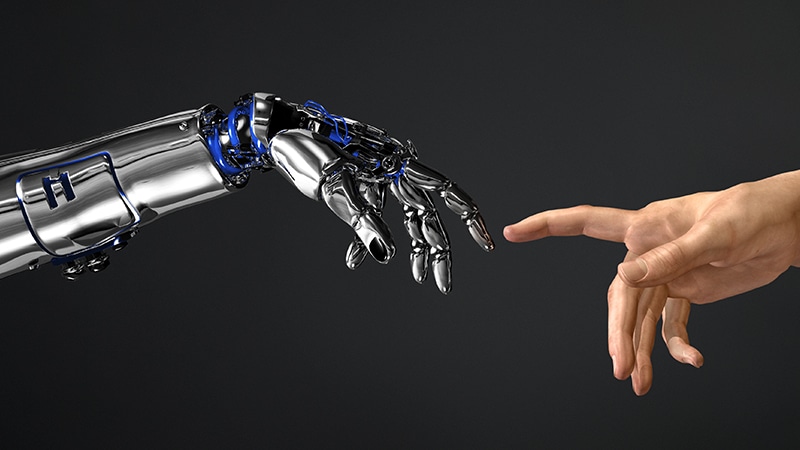Precision farming on the rise: How agricultural robots increase yields
Published on 22.06.2021 CEST
Even if farmers would like to see “swarms of robots” helping to manage their crops: Initial costs are still high. Innovative pricing models such as “Robots as a Service” promise to provide a remedy here. © Getty
Thanks to robotics, weeding is back in fashion – a report on the agricultural workers of the third millennium
Their names are Dick, Tom and Harry and they are electronic farm workers who will help farmers to cultivate their fields more efficiently in the future. What makes them so special? With their nimble “hands” they literally get to the root of agricultural problems – and thus protect the environment.
By Megan Tatum,
British science journalist working for print and online media. She is a permanent freelancer for Wired UK.
We feature her report here as part of our Publishing Partnership with Wired UK.
At Lockerley estate a robot called Tom is making its way slowly but steadily through 650 hectares of arable farmland. Weighing just 150 kilograms, the autonomous precision farming robot travels on four wheels, splashes of orange on its 1.8 metre long metal frame. Fixed out in front, at the end of Tom’s long crane-like lever, a powerful double camera scans each individual wheat plant poking out of the Hampshire soil.
Each day the robot, designed by UK start-up Small Robot Company, can travel up to 20 hectares in this way, collecting around six terabytes of data on exactly which patches of wheat might be blighted by weeds – a problem that, if left unchecked, can see whole fields of crops destroyed. Once Tom is finished, it’s the turn of Dick. A spider-like precision bot armed with a five-pronged “death wand” Dick can electrocute every single weed detected with a small puff of smoke, and zero chemicals.
For Craig Livingstone, who has been managing the Lockerley estate for the past five years, trialling the use of Tom and Dick over the last 12 months has been a massive boon. Since his arrival, the farm had already reduced its use of pesticides by 41 per cent and fertiliser by 32 per cent, using a mix of crop rotation, agronomy (the study of soil) and a 1,000-strong herd of grazing sheep.
All of that has saved time and money, and helped protect the environment. “But where is the next 40 per cent reduction going to come from?” asks Livingstone. “For me, it’s with the aid of robots.” Their help can’t come soon enough for UK farming, he adds. “This is the second month of the biggest ten years British agriculture faces. If we're not in a position to embrace and look at new technology now, then we're going to fall behind.”

The robot named Tom scans the ground for wheat plants. © photo: Small Robot Company
Climate change and labour shortages pave the way for robotic aid
The UK’s roughly 150,000 farms currently face a perfect storm of pressures. Some are threats that have built up over many decades, like the damage wrought by climate change. Facing more severe weather, and a greater spread of pests and disease, UK farmers have now committed to an ambitious net zero carbon target by 2040.
But there are other developments that pose major challenges for British farmers. The novel coronavirus pandemic has made things even worse. Not only have the restrictions on travel spread struggling farmers even thinner, with “thousands of vacancies in fields, polytunnels, glasshouses and packhouses”, according to farming representative body the National Farmers’ Union, but there’s now a bigger dependence on locally sourced produce from UK supermarkets looking to avoid a repeat of the disruptions of 2020. That means increased demand with reduced manpower.
“In the past, in agriculture we would’ve just thrown labour at the problem,” says Mark Gray, manager for the UK and Ireland at Danish robotics manufacturer Universal Robots. “But we can’t do that now.” Robots now offer hope that it might be possible to plug the gap – while also making farming both more efficient and better for the environment.
Automation is the order of the day in British agriculture
Traditionally, the UK has lagged behind when it comes to automation: in 2018, there were only 85 robots per 100,000 workers, compared to more than 700 per 100,000 for world leader South Korea. But there are growing efforts to change that. The UK agritech sector, already worth £14 billion and employing around half a million people, has recently received significantly more support from the government. In 2013, a £160 million Agri-Tech Initiative was launched, four new Agri-Tech Innovation Centres were established and several rounds of funding for innovative projects were carried out. Example:
“£24 million has been allocated in 2020 for robotics to help farmers increase their sustainability.”
Electronic helpers include robots that can pick and pack soft fruits, a “vertical farming” stacking system for crops by London-based InFarm and even portable devices for dairy cows to monitor milk production.
Xihelm, a UK start-up run by former Google staffer James Kent, was one of those to receive a government grant in 2018 for its robotic glasshouse harvester, beginning commercial trials on farms the same year. Now the fifth generation of the bot, Eagle, is up and running at sites like FlavourFresh Salads in Southport, where it arrived in June 2020. In a glasshouse filled with row upon row of tomatoes, the robot arm uses AI to locate clusters of the ripest fruits before carefully pinching the stem to pluck them off.
For FlavourFresh, which typically relies on around 80 seasonal workers to help harvest its thousands of tonnes of tomatoes and berries, the robot is a big help in tackling all the uncertainty around labour, says managing director Charmay Prout.
“Typically we get flushes of crops where fruits are ready at once, and if we’ve not got enough people to pick, it can result in high wastage, and ultimately impact our profitability.”
It isn’t only a shortage of labour that robotics can tackle either but also the increasing costs of hiring workers, she adds, with a 21 per cent increase in the National Living Wage since 2016. Plus, limiting staff in glasshouses can help limit the spread of pests and disease, as it avoids the need for workers to move from one area to the next during harvesting.
Investment in farming robots compensates for lack of harvest workers
More and more UK farmers are understanding the benefits of investing in robotics, says Peter Keeling, founder of agricultural research and development company KMS Projects. “Three years ago I addressed a group of farmers who couldn’t see why we’d want to robotise the picking of crops. Since then, almost all the farmers [we speak to] are on board.” The company’s new automated broccoli harvester, which is now awaiting final field trials before it’s ready to hit the market, has the potential to carry out the job of roughly six workers, he says. Plus, it’s more efficient. Powered by a tractor, its three robot arms are fitted with a precise cutting tool capable of harvesting a head of broccoli every three seconds – twice as fast as a manual picker.
Currently, farming robots receive only a tiny fraction of the total funding in the agri-tech market (about three per cent according to AgFunder, an agri-tech venture capitalist), with the journey from prototype to scalable technology often taking years. The development of the KMS automated harvester, for example, took twelve years and more than £250,000.
Is it the time for “Robots as a Service” (RaaS)?
“Many UK farmers are small businesses that lack the capital needed to invest in these kinds of technologies,” points out Fabian Wallace-Stephens, senior researcher at think tank RSA. There are efforts to mitigate the risks of this big upfront investment by offering “robotics as a service,” he adds, “which doesn’t require the same level of upfront investment but are sustained through transaction fees.”
At Small Robot Company, for example, the plan is to offer “robots as a service” by 2024, rather than asking the likes of Livingstone to shell out hundreds of thousands of pounds on their Tom, Dick and Harry (a third bot capable of planting individual seeds in precisely drilled holes). Keeling too anticipates that though “bigger farms will take on robotics because they’ll have to, because of the acreage on which they work,” smaller farms, which make up about two thirds of farms in Europe, will require a more affordable option if they’re to get involved.
Robotics isn’t a quick fix, agrees Livingstone. And much as he’d like to see “swarms of robots” helping to manage his crops, he accepts “this is a system change, it’s a mindset change. It’s going to require far more than ‘introduce a robot and your problems go away’.” It’ll require collaborating with robotics manufacturers in much the same way farmers have teamed up with pesticide manufacturers or agronomists in the past as a way to boost yields or control weeds without the need to cultivate plants by hand. But the change is necessary, he believes.
Worth reading in this context
Published on 22.06.2021 CEST



